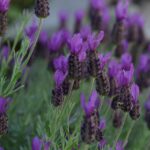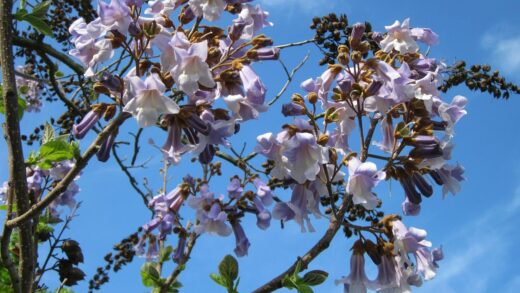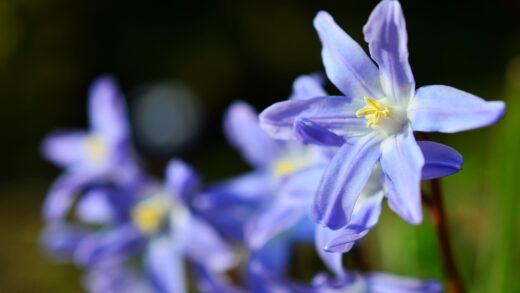Pruning the Burnet Rose is a task that requires a different mindset than that used for modern hybrid roses; it is an exercise in restraint rather than rigorous shaping. This species flowers on old wood, meaning the flower buds for the upcoming season are formed on the canes that grew in previous years. Consequently, hard pruning in the spring, as one might do with a hybrid tea, will remove the majority of the flowering wood and result in a severe reduction of blooms. The primary goals of pruning this resilient shrub are to maintain its health, encourage rejuvenation, and preserve its beautiful, natural, wild form. The best approach is a light and selective one, focusing on the three ‘D’s: removing any wood that is dead, damaged, or diseased.
The ideal time to undertake any significant pruning is in the late winter or very early spring, while the plant is still dormant and before the new leaf buds begin to swell. This timing allows you to clearly see the entire structure of the shrub without the obstruction of foliage, making it easier to identify which canes should be removed. Pruning at this time also ensures that the cuts are made just before the plant enters its active growth phase, which allows the wounds to heal quickly, minimizing the risk of disease entry.
It is essential to use the right tools for the job to ensure clean cuts that heal properly. A sharp, clean pair of bypass secateurs is perfect for smaller canes, while a pair of loppers will be needed for thicker, older stems. For the largest, woodiest canes at the base of the plant, a pruning saw may be necessary. Always ensure your tools are sterilized with rubbing alcohol or a bleach solution before you start and between plants to prevent the spread of any potential diseases.
Embracing the natural habit of the Burnet Rose is key to a successful pruning strategy. It is a suckering shrub that naturally forms a dense, twiggy thicket. Your pruning should aim to work with this tendency, not against it. The goal is to create a healthy framework of canes of various ages, from young, new shoots to mature, productive stems. This ensures the continuous renewal of the shrub and a consistent display of flowers year after year.
The philosophy of light pruning
The fundamental principle to remember when approaching a Burnet Rose with secateurs is “less is more.” This rose has a naturally beautiful and dense shrubby form that requires minimal human intervention to look its best. Unlike highly cultivated roses that are pruned to encourage specific growth patterns for exhibition-quality blooms, the Burnet Rose is best left to develop its own character. Aggressive or excessive pruning will destroy its graceful, wild aesthetic and, more importantly, will drastically reduce its flowering potential.
More articles on this topic
The main pruning activity each year should be a simple health check. Carefully inspect the entire shrub and remove any canes that are clearly dead, which will be dry, brittle, and often discoloured. Next, look for any canes that have been damaged by wind, snow, or animal activity and cut them back to healthy wood. Finally, identify any canes that show signs of disease, such as cankers, and remove them completely to prevent the issue from spreading. This basic sanitary pruning is often all that is required for a healthy, established plant.
Beyond the removal of dead, damaged, and diseased wood, you may want to perform some light thinning to improve the overall structure and health of the shrub. If the center of the plant has become extremely congested, you can selectively remove one or two of the oldest, thickest canes right down to the base. This will open up the shrub, improving air circulation and light penetration to the interior, which can help to prevent fungal diseases and encourage new growth from the base.
Resist the temptation to “tidy up” the plant by shearing it into a formal shape or by uniformly reducing its height. This type of pruning is detrimental to its health and flowering. Shearing will remove the flowering wood from the tips of the branches and will destroy the plant’s natural, arching habit, resulting in a dense outer layer of foliage and a bare interior. A light, selective, and patient approach will always yield the best results with this particular species.
Timing your pruning cuts
The timing of your pruning is absolutely critical for the Burnet Rose due to its habit of flowering on old wood. The major pruning session, which includes any structural thinning or removal of old canes, must be done in the dormant season. Late winter or early spring, after the worst of the winter cold has passed but before the plant begins to actively grow, is the perfect window. In most climates, this will fall somewhere between late February and early April.
More articles on this topic
Pruning during dormancy offers several advantages. Without leaves on the plant, you have a clear view of its entire framework, making it much easier to assess the structure and decide which canes need to be removed or shortened. It is simple to spot crossing branches, damaged wood, and the overall density of the shrub. Making cuts before the sap starts to rise also means the plant loses less energy and the wounds have the entire growing season to heal.
The one type of pruning that can be done at a different time is the removal of suckers. The Burnet Rose spreads via underground stems, sending up new shoots (suckers) at a distance from the main plant. If these suckers are appearing where you do not want them, they can be removed at any time during the growing season. The most effective way to do this is to dig down slightly to find the root they are growing from and tear them off at the source, rather than simply cutting them at ground level, which can encourage more to grow from the cut point.
You should strictly avoid any significant pruning in the late summer or autumn. Making cuts at this time can stimulate the plant to produce a flush of new growth. This tender new foliage will not have time to harden off before the arrival of winter frosts and will be easily killed by the cold. This not only wastes the plant’s energy reserves but the frost-damaged tips can also provide an entry point for diseases like canker to infect the canes over the winter.
Renewal pruning for rejuvenation
Over many years, an old Burnet Rose shrub can become overly dense and may contain a large number of old, woody, and less productive canes. While these old canes still produce flowers, their vigour may decline. In such cases, a technique known as renewal pruning can be used to gradually rejuvenate the entire plant without ever performing a hard, drastic prune. This method maintains the health and flowering of the shrub over the long term.
The process of renewal pruning involves selectively removing a small number of the oldest, thickest, and least productive canes each year. In late winter, identify one to three of the most ancient-looking stems in the clump. These are often darker in colour, very thick, and may have flaky bark. Using a pair of loppers or a pruning saw, cut these selected canes right down to the ground level or as close to the base as possible.
Removing these old canes accomplishes two important things. Firstly, it opens up the structure of the plant, allowing more light and air to reach the center. Secondly, and more importantly, it stimulates the plant’s crown and root system to produce new, vigorous shoots from the base. These new canes will grow up to replace the old ones, and in subsequent years, they will become part of the productive, flowering framework of the shrub.
By repeating this process annually, removing just a few of the oldest canes each winter, you ensure that over a period of three to five years, you will have gradually renewed the entire structure of the plant. This continuous cycle of removal and replacement keeps the shrub vigorous, healthy, and productive indefinitely. It is a sustainable and gentle approach that works in harmony with the plant’s natural growth cycle.
Post-flowering considerations
Once the Burnet Rose has finished its main flush of flowering in late spring or early summer, your pruning shears should be put away. It is absolutely essential to resist the urge to deadhead the faded blooms, a common practice with repeat-blooming roses. Each faded flower on a Burnet Rose has the potential to develop into a large, decorative hip. Deadheading will completely prevent the formation of these hips, robbing you of one of the plant’s most attractive seasonal features.
The hips begin as small green spheres and slowly swell and ripen over the summer months. By autumn, they will have transformed into stunning, large, purplish-black globes that provide a fantastic ornamental display, often coinciding with the plant’s attractive yellow autumn foliage. This secondary season of interest is a major reason for growing this particular rose, so sacrificing it for the sake of tidiness is a poor trade-off.
The only cutting back you might consider after flowering is if you are growing the rose as an informal hedge and wish to lightly shape it. This can be done with shears immediately after the flowering period has ended. However, be fully aware that this action will remove all the developing hips, so you must choose between a neater hedge shape and the autumn/winter display of hips. For a naturalistic garden setting, it is always recommended to leave the plant unpruned after flowering.
In summary, the post-flowering period is a time for observation, not intervention. Allow the plant to naturally transition from its flowering phase into its fruiting phase. The development of the hips is a crucial part of its annual cycle. These hips are not only beautiful but also provide a valuable food source for birds and other wildlife through the autumn and winter, adding another layer of ecological value to this exceptional garden shrub.
📷No machine-readable author provided. Svdmolen assumed (based on copyright claims)., CC BY-SA 3.0, via Wikimedia Commons


















